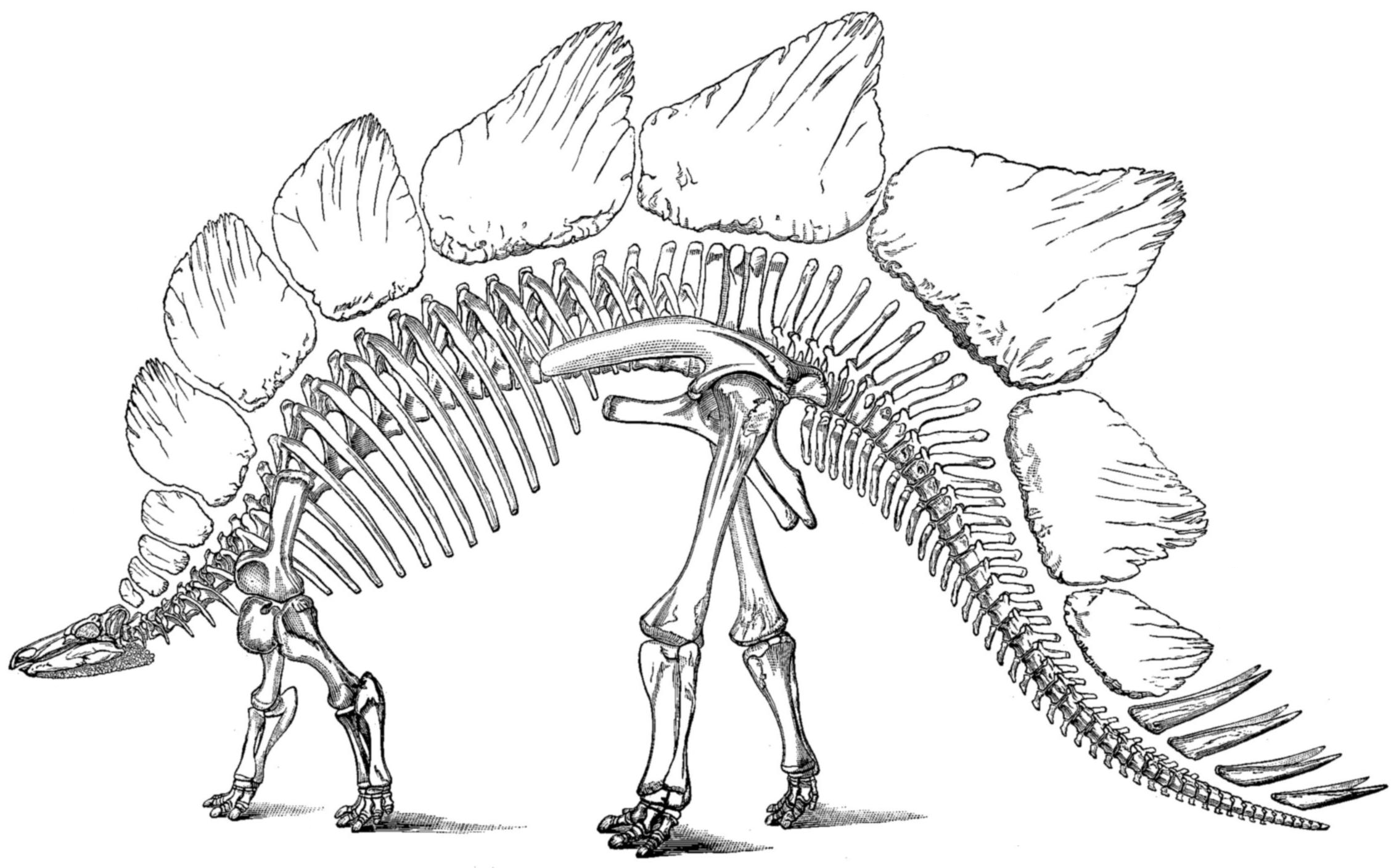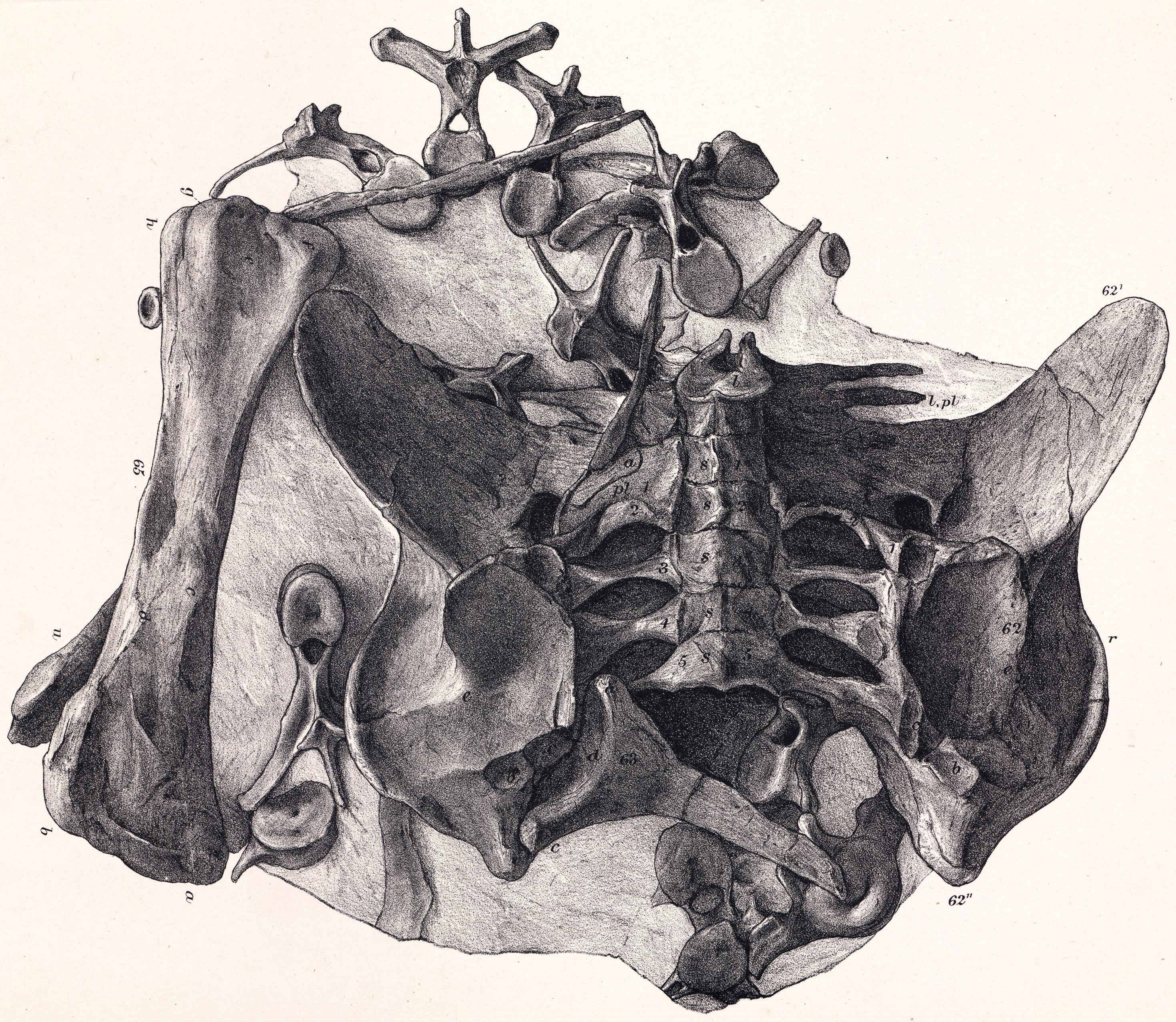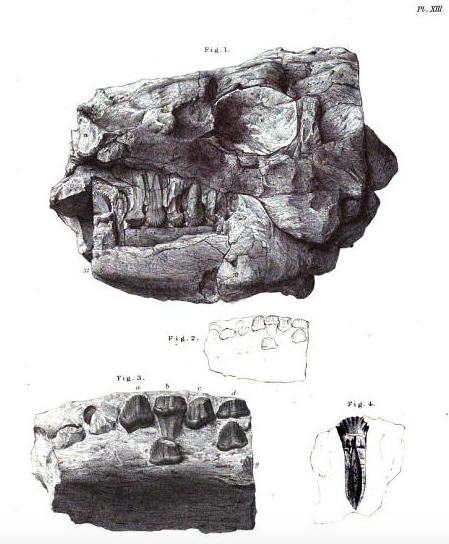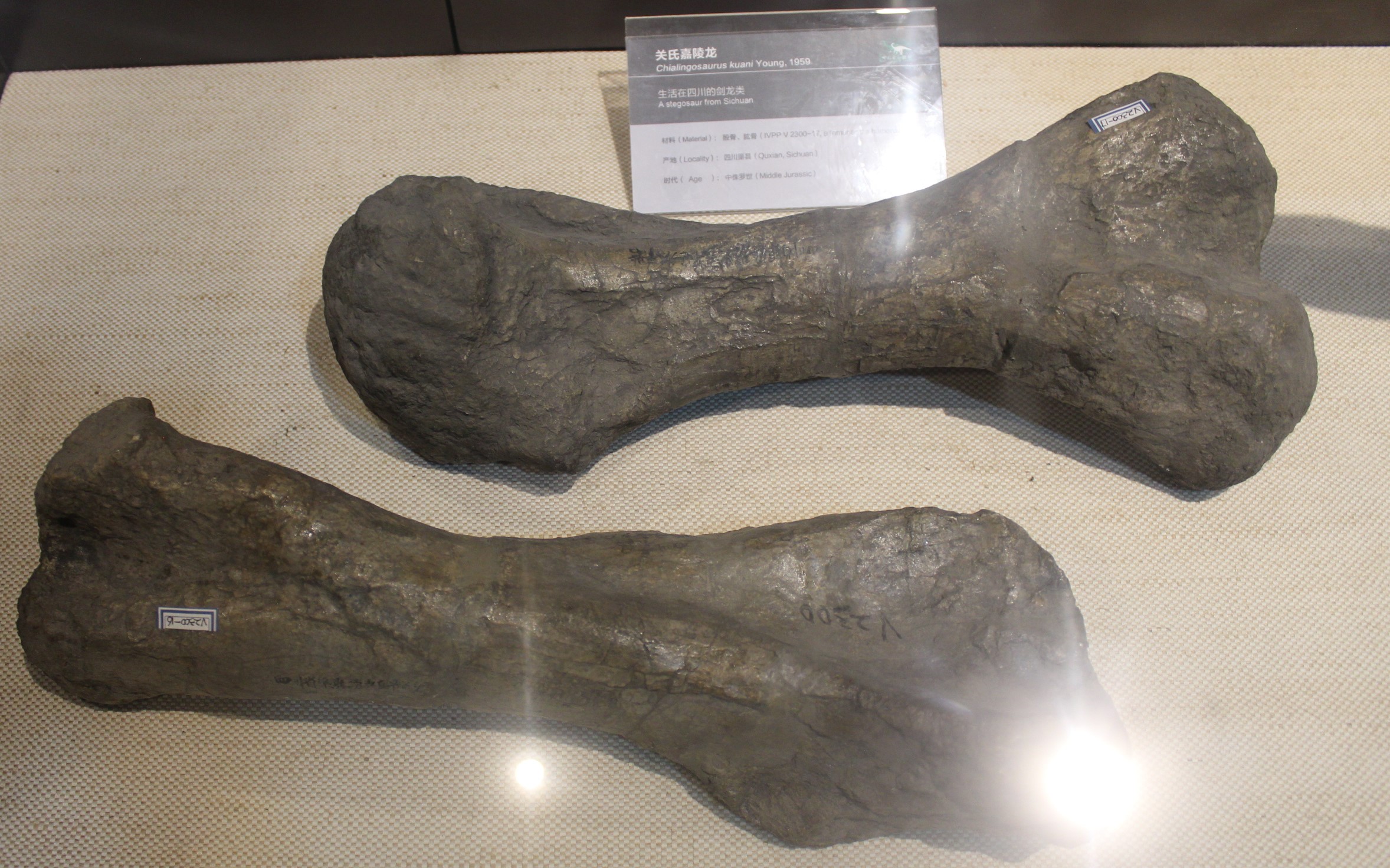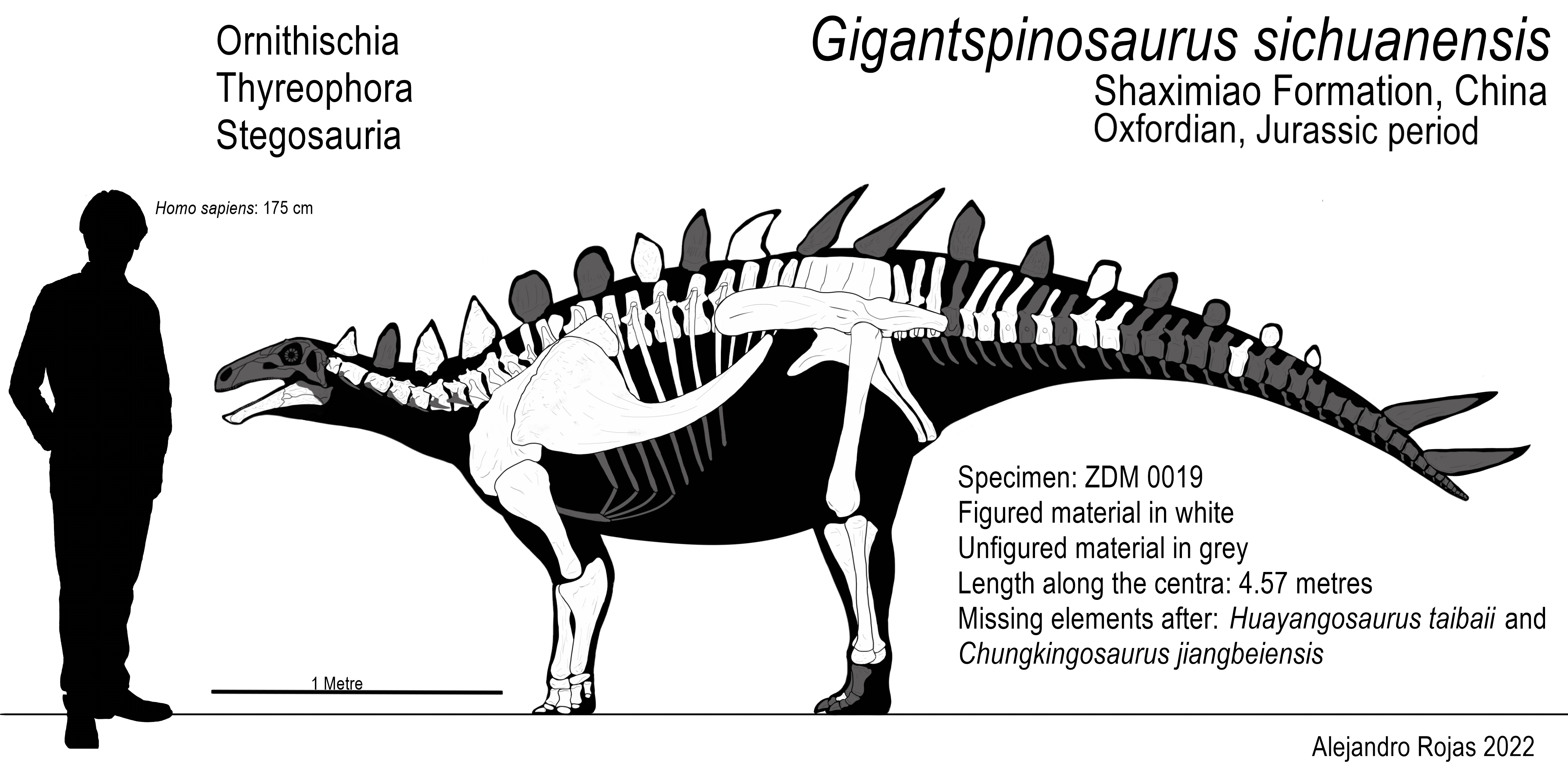|
Stegosauria
Stegosauria is a group of Herbivore, herbivorous ornithischian dinosaurs that lived during the Jurassic and early Cretaceous Period (geology), periods. Stegosaurian fossils have been found mostly in the Northern Hemisphere (North America, Europe and Asia), Africa and South America. Their geographical origins are unclear; the earliest unequivocal stegosaurian, ''Bashanosaurus primitivus'', was found in the Bathonian Shaximiao Formation of China. Stegosaurians were armored dinosaurs (thyreophorans). Originally, they did not differ much from more primitive members of that group, being small, low-slung, running animals protected by armored scutes. An early evolutionary innovation was the development of spikes as defensive weapons. Later species, belonging to a subgroup called the Stegosauridae, became larger, and developed long hindlimbs that no longer allowed them to run. This increased the importance of active defence by the thagomizer, which could ward off even large predators becau ... [...More Info...] [...Related Items...] OR: [Wikipedia] [Google] [Baidu] |
Stegosaurus Ungulatus
''Stegosaurus'' (; ) is a genus of herbivorous, four-legged, armored dinosaur from the Late Jurassic, characterized by the distinctive kite-shaped upright osteoderm, plates along their backs and thagomizer, spikes on their tails. Fossils of the genus have been found in the western United States and in Portugal, where they are found in Kimmeridgian- to Tithonian-aged strata, dating to between 155 and 145 Mya (unit), million years ago. Of the species that have been classified in the upper Morrison Formation of the western US, only three are universally recognized: ''S. stenops'', ''S. ungulatus'' and ''S. sulcatus''. The remains of over 80 individual animals of this genus have been found. ''Stegosaurus'' would have lived alongside dinosaurs such as ''Apatosaurus'', ''Diplodocus'', ''Camarasaurus'' and ''Allosaurus'', the latter of which may have preyed on it. They were large, heavily built, herbivorous quadrupeds with rounded backs, short fore limbs, long hind limbs, and tai ... [...More Info...] [...Related Items...] OR: [Wikipedia] [Google] [Baidu] |
Kentrosaurus
''Kentrosaurus'' ( ; ) is a genus of stegosaurid dinosaur from the Late Jurassic in Lindi Region of Tanzania. The type species is ''K. aethiopicus'', named and described by German people, German Palaeontology, palaeontologist Edwin Hennig in 1915. Often thought to be a "Primitive (phylogenetics), primitive" member of the Stegosauria, several recent cladistic analyses find it as more derived than many other stegosaurs, and a close relative of ''Stegosaurus'' from the North American Morrison Formation within the Stegosauridae. Fossils of ''K. aethiopicus'' have been found only in the Tendaguru Formation, dated to the late Kimmeridgian and early Tithonian ages, about 152 annum, million years ago. Hundreds of bones were unearthed by German expeditions to German East Africa between 1909 and 1912. Although no complete skeletons are known, the remains provided a nearly complete picture of the build of the animal. In the Tendaguru Formation, it coexisted with a variety of dinosaurs such ... [...More Info...] [...Related Items...] OR: [Wikipedia] [Google] [Baidu] |
Dacentrurus
''Dacentrurus'' (meaning "tail full of points"), originally known as ''Omosaurus'', is a genus of Stegosauria, stegosaurian dinosaur from the Late Jurassic and perhaps Early Cretaceous (154 - 140 mya (unit), mya) of Europe. Its type species, ''Omosaurus armatus'', was named in 1875, based on a skeleton found in a clay pit in the Kimmeridge Clay in Swindon, England. In 1902 the genus was renamed ''Dacentrurus'' because the name ''Omosaurus'' had already been used for a phytosaur. After 1875, half a dozen other species would be named but perhaps only ''Dacentrurus armatus'' is valid. ''Dacentrurus'' was the largest stegosaur measuring around long and weighing up to . Finds of this animal have been limited, so much of its appearance is uncertain and its relationship with other members of the Dacentrurinae are contentious. Some researchers suggest that ''Miragaia longicollum'' represents a junior synonym of this taxon. Discovery and species On 23 May 1874, James Shopland of the S ... [...More Info...] [...Related Items...] OR: [Wikipedia] [Google] [Baidu] |
Paranthodon
''Paranthodon'' ( ) is a genus of stegosaurian dinosaur that lived in what is now South Africa during the Early Cretaceous, between 139 and 131 million years ago. Discovered in 1845, it was one of the first stegosaurians found. Its only remains, a partial skull, isolated teeth, and fragments of vertebrae, were found in the Kirkwood Formation. British paleontologist Richard Owen initially identified the fragments as those of the pareiasaur '' Anthodon''. After remaining untouched for years in the British Museum of Natural History, the partial skull was identified by South African paleontologist Robert Broom as belonging to a different genus; he named the specimen '' Palaeoscincus africanus''. Several years later, Hungarian paleontologist Franz Nopcsa, unaware of Broom's new name, similarly concluded that it represented a new taxon, and named it ''Paranthodon owenii''. Since Nopcsa's species name was assigned after Broom's, and Broom did not assign a new genus, both names ar ... [...More Info...] [...Related Items...] OR: [Wikipedia] [Google] [Baidu] |
Alcovasaurus
''Alcovasaurus'' is an extinct genus of herbivorous stegosaurian dinosaurs that lived in the Late Jurassic. It was found in the Morrison Formation of Natrona County, Wyoming, Natrona County, Wyoming, United States. The genus contains a monotypic taxon, single species, ''Alcovasaurus longispinus'', originally assigned to the genus ''Stegosaurus''. It is likely a member of the Dacentrurinae, and has been referred to the genus ''Miragaia longicollum, Miragaia'' by some authors. Discovery and naming In July 1908, Professors William Harlow Reed and A.C. Dart of the University of Wyoming, in the Alcova Quarry in Natrona County, Wyoming, uncovered the skeleton of a stegosaurian. This would be the last major excavation of a dinosaur in which Reed was personally involved. In 1914, the find was named and described as ''Stegosaurus longispinus'' by Charles Whitney Gilmore on the basis of holotype UW 20503 (originally UW D54), a partial postcranial skeleton of an adult individual consisting ... [...More Info...] [...Related Items...] OR: [Wikipedia] [Google] [Baidu] |
Chialingosaurus
''Chialingosaurus'' (meaning " Chialing Lizard") is a genus of herbivorous stegosaurian dinosaur similar to ''Kentrosaurus'' from the Upper Shaximiao Formation, Late Jurassic beds in Sichuan Province in China. Its age makes it one of the oldest species of stegosaurs, living about 160 million years ago. Since it was an herbivore, scientists think that ''Chialingosaurus'' probably ate ferns and cycads, which were plentiful during the period when ''Chialingosaurus'' was alive. Discovery and species The fossils of ''Chialingosaurus'' were collected by the geologist Kuan Yaowu or Guan Yao-Wu in 1957, at Taipingstai in Quxian County, while surveying the Chialing River in southern China. The type species ''Chialingosaurus kuani'' was named and described by paleontologist Yang Zhongjian, ("C. C. Young") two years later in 1959. The generic name refers to the Chialing. The specific name honours Kuan. ''Chialingosaurus'' was the first stegosaurian described from China.C.-C. Young, 195 ... [...More Info...] [...Related Items...] OR: [Wikipedia] [Google] [Baidu] |
Chungkingosaurus
''Chungkingosaurus'', meaning "Chongqing Lizard", is a rather controversial genus of Herbivore, herbivorous dinosaur from the Late Jurassic Upper Shaximiao Formation in what is now China. It is a member of the Stegosauria. It is also a quadruped dinosaur. Description According to Dong e.a. the ''Chungkingosaurus jiangbeiensis'' holotype was one of the smallest stegosaurs with a length of less than four metres, even though it was apparently an adult, judging by the ossification of the sacrum. ''Chungkingosaurus'' sp. 1 was estimated at five metres; ''Chungkingosaurus'' sp. 2 was seen as longer than five metres. Dong e.a. indicated that ''Chungkingosaurus'' strongly resembled ''Tuojiangosaurus'', found in the same formation, in many anatomical details. ''Chungkingosaurus'' was different in its smaller size, deeper snout and front lower jaws (resulting in a relatively high and narrow skull), and non-overlapping teeth with less pronounced denticles. ''Chungkingosaurus'' probably po ... [...More Info...] [...Related Items...] OR: [Wikipedia] [Google] [Baidu] |
Craterosaurus
''Craterosaurus'' (meaning ''krater reptile'' or ''bowl reptile'') was a genus of stegosaurid dinosaur. It lived during the Early Cretaceous (possibly Aptian stage) of the Woburn Sands Formation of England. Estimated to measure around in length and weighing approximately , ''Craterosaurus'' may actually be a junior synonym of '' Regnosaurus'',Parker, Steve. Dinosaurus: the complete guide to dinosaurs. Firefly Books Inc, 2003. Pg. 348 but only one fossil, a partial vertebra, was recovered. History of naming A fossil was discovered by Mr. Charlesworth in the Woburn Sands Formation near Potton, Bedfordshire, in a brown sandstone layer with many phosphate nodules. In 1874 this fossil was described by British palaeontologist Harry Govier Seeley as a new taxon, named ''Craterosaurus pottonensis''. The holotype and only definitive specimen of ''Craterosaurus'' is stored in the Sedgwick Museum of Earth Sciences under accession number SMC B.28814. Seeley interpreted ''Craterosaurus'' ... [...More Info...] [...Related Items...] OR: [Wikipedia] [Google] [Baidu] |
Tuojiangosaurus
''Tuojiangosaurus'' (meaning " Tuo River lizard") is a genus of herbivorous stegosaurian dinosaur from the Late Jurassic Period, recovered from the Upper Shaximiao Formation of what is now Sichuan Province in China. Description ''Tuojiangosaurus'' was a large stegosaur, reaching in length and in body mass. Physically similar to the North American ''Stegosaurus'', ''Tuojiangosaurus'' is the best understood of the Chinese stegosaurs. In 1977, Dong provided a diagnosis but this largely consisted of traits shared with other stegosaurus. In 1990, Peter Malcolm Galton pointed out an autapomorphy: the spines of the vertebrae of the tail base possess spines with bony skirts running from their front to the sides. In 2006, Susannah Maidment and Guangbiao Wei would identify two other diagnostic characters: the frontal bones are wider than they are long, and the supraacetabular and posterior processes of the ilium are well-separated. ''Tuojiangosaurus'' has the typical narrow and l ... [...More Info...] [...Related Items...] OR: [Wikipedia] [Google] [Baidu] |
Gigantspinosaurus
''Gigantspinosaurus'' () is a genus of herbivorous ornithischian dinosaur from the Late Jurassic. It was a stegosaur found in China. Discovery The first fossil was found in 1985 by Ouyang Hui at Pengtang near Jinquan and was reported upon in 1986 by Gao Ruiqi and colleagues, mistaking it for a specimen of '' Tuojiangosaurus''. The type species, ''Gigantspinosaurus sichuanensis'', was described and named by Ouyang in 1992 in an abstract of a lecture. The generic name is derived from Latin ''gigas'' or ''giganteus'', "enormous", and ''spina'', "spine", in reference to the gigantic shoulder spines. The specific name refers to Sichuan. The name was generally considered a ''nomen nudum'' in the West, until in 2006 it was disclosed that the abstract contained a sufficient description. Despite its uncertain nomenclatural status, images of ''Gigantspinosaurus'' had appeared in several sources. Public awareness of this animal was increased in early 2006 when Tracy Ford, considering ... [...More Info...] [...Related Items...] OR: [Wikipedia] [Google] [Baidu] |
Hesperosaurus
''Hesperosaurus'' (meaning "western lizard", from Classical Greek (') "western" and (') "lizard") is a herbivorous stegosaurian dinosaur from the Kimmeridgian age of the Jurassic period, approximately 156 million years ago. Fossils of ''Hesperosaurus'' have been found in the state of Wyoming and Montana in the United States of America since 1985. The type species ''Hesperosaurus mjosi'' was named in 2001. It is from an older part of the Morrison Formation, and so a little older than other Morrison stegosaurs. Several relatively complete skeletons of ''Hesperosaurus'' are known. One specimen preserves the first known impression of the horn sheath of a stegosaurian back plate. ''Hesperosaurus'' was a member of the Stegosauridae, quadrupedal plant-eaters protected by vertical bony plates and spikes. It was closely related to ''Stegosaurus'' and was similar to it in having two rows of, possibly alternating, plates on its back and four spikes on its tail end. The plates on its back ... [...More Info...] [...Related Items...] OR: [Wikipedia] [Google] [Baidu] |
Bashanosaurus
''Bashanosaurus'' (meaning "Bashan lizard") is an extinct genus of stegosaurian dinosaur from the Middle Jurassic (Bathonian age) Shaximiao Formation of Yunyang County, China. The genus contains a single species, ''Bashanosaurus primitivus'', known from incomplete skeletons belonging to three individuals. It is one of the basalmost stegosaurs, as well as one of the oldest known stegosaurs, along with ''Adratiklit'', '' Isaberrysaura'', and '' Thyreosaurus''. Discovery and naming In 2016, a quarry of dinosaur fossils representing outcrops of the lower Shaximiao Formation was found in Laojun Village of Pu’an Township in Yunyang County, Chongqing Municipality, China. The ''Bashanosaurus'' fossil material was among the bones found in the outcrops, consisting of three specimens collected from the same horizon. The holotype specimen, CLGPR V00006-1, includes one dorsal and two caudal vertebrae, the right scapulocoracoid, a partial left hindlimb (femur, tibia, fibula, and a m ... [...More Info...] [...Related Items...] OR: [Wikipedia] [Google] [Baidu] |

